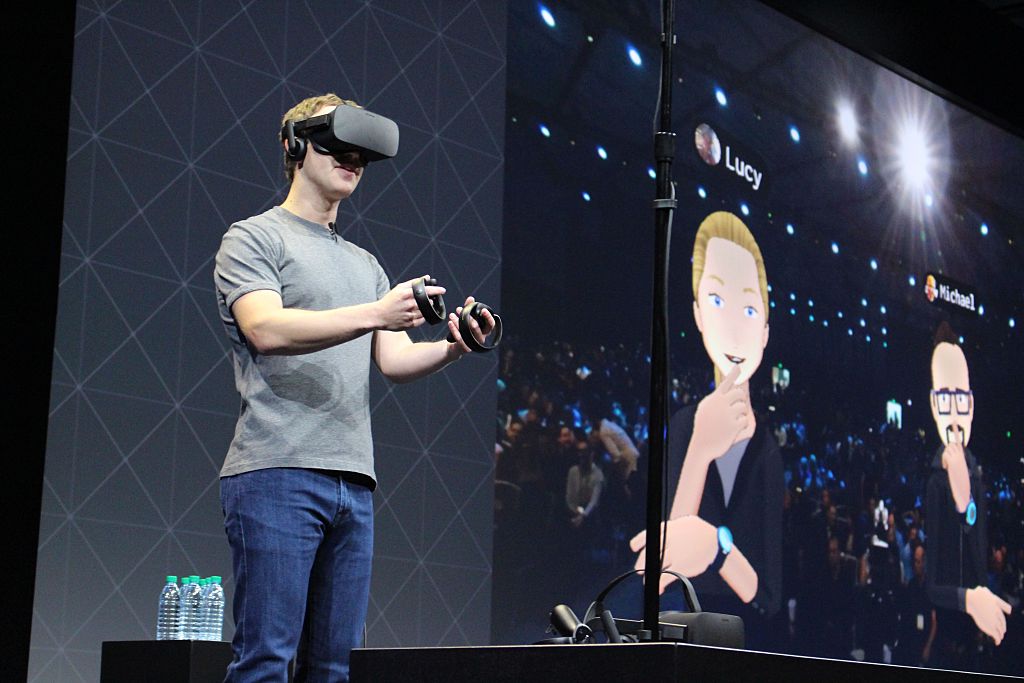A cloud of soulless bots has devoured our grandest dreams. How do we live now?
How Meta

The metaverse raises a lot of unanswered questions.
In a recent essay for Foreign Policy, Parag Khanna and Balaji S. Srinivasan, two savvy tech entrepreneurs, argued that the twenty-first century belongs neither to China nor the United States. Nor does it belong “to tech companies as traditionally understood,” they added; instead, the twenty-first century “belongs to the internet.”
Which brings us to the metaverse, the next chapter in the internet’s evolution.
On October 28, Facebook announced that it was changing its company name to Meta. “Today we are seen as a social media company, but in our DNA we are a company that builds technology to connect people, and the metaverse is the next frontier, just like social networking was when we got started,” said Mark Zuckerberg, Meta’s CEO.
Sadly, when people hear the term “metaverse,” they automatically think of Mark Zuckerberg. It’s like hearing the word actor, and automatically thinking of Tom Cruise. Other actors exist, and other companies dedicated to the exploration of the metaverse also exist. Some of them are located in the United States; others, though, are located overseas, in countries like South Korea and China. Seoul, the capital of South Korea, for example, recently announced plans to enter the metaverse by 2026.
What does all this mean? Where is humanity headed? What dangers, if any, await us? Before answering these questions, we must ask: what is the metaverse?
Web 1, 2, 3
Thirty years ago, the world was introduced to Web 1, the first iteration of the internet. It was basic, essentially acting as an information portal. Users were passive, rather than active. It was, once you got past the initial novelty, rather boring. A decade later, however, things changed. Web 2 burst onto the scene, changing the world and the ways in which we communicate in the most profound of ways. The second iteration of the internet actively encouraged participation and collaboration, as well as information sharing, including misinformation and disinformation. Web 2 birthed the likes of Flickr and Facebook, Twitter and TikTok. With Web 3, we enter the age of the embodied internet, where physical and digital worlds collide, and the line between virtual reality and actual reality becomes blurry, perhaps even invisible.
The term “metaverse” was coined in the early nineties by author Neal Stephenson. In Snow Crash, his seminal science fiction novel, Stephenson described a world where humans interacted with each other via avatars inside a three-dimensional virtual space. Stephenson’s novel was prophetic. In the not-so-distant future, we will access the metaverse through virtual reality (VR), augmented reality (AR), and mixed reality. These experiences will be amplified by haptic technology, like wearable, vibrating gloves that offer tactile feedback, and other forms of “smart” clothing. The metaverse is big business, with some analysts valuing it at $1 trillion.
The metaverse will take Big Data, biometrics, digital currencies (Bitcoin and its 10,000 brethren), blockchain technology, NFTs, VR, AR, haptic devices, the internet of things (IoT), machine learning, and quantum computing, and throw them all into a metaphysical blender. If you think Web 2 has had a profound effect on humanity—and it very much has—wait until the metaverse arrives. Web 3 in its fullest expression is coming and it may very well be here by the end of the decade. When it arrives, chances are society, including our governments, will be ill-prepared for the almost-guaranteed chaos that accompanies it.
Deepfakes and deeper divisions
The word “deepfake” is a combination of the words ‘deep learning’ and ‘fake.’ Deep learning is a subset of machine learning, a branch of AI and computer science that uses copious amounts of data to make machines smarter. The metaverse will be inextricably linked with AI and machine learning, advanced algorithms and data harvesting. Machines will get smarter. Are we getting smarter? In one word, no.
In October, Forbes published a rather interesting piece about a group of cybercriminals based in the United Arab Emirates who used deepfake technology to pull off a daring bank heist. By using deepfake software, the criminals recreated the voice of an executive at a hugely successful company. They then called the executive’s bank manager, using the deepfake voice, to request the transfer of $35 million out of the country and into various bank accounts across the globe.
Deepfake technology poses a distinct threat to governments and various institutions, including financial ones. Technology is improving at breakneck speeds; the proliferation of deepfake content should concern us all. According to a report from startup Deeptrace, in 2019 there were “only” 7,964 deepfake videos online; nine months later, that figure had almost doubled. As Hany Farid, a Berkeley professor and expert in deepfake technologies, told the Financial Times, deepfakes are coming for us all. “I’ve never seen anything like how fast they’re going,” he warned. Web 2 gave us the word and concept of deepfakes; Web 3, which includes the metaverse, will make things considerably worse. We look likely to spend more time online, thus making us vulnerable to inordinate amounts of fake videos and fake voices, as well as fake avatars.
The metaverse will rely on blockchain technology, the underlying technology supporting NFTs and various cryptocurrencies, to function properly. The blockchain, contrary to popular belief, is very much hackable—meaning digital assets are vulnerable to attack. Goldman Sachs recently said that the metaverse will have little option but to run on blockchain technology. For the uninitiated, BTC and ETH, the two most popular cryptocurrencies, exist on the blockchain, meaning they are particularly vulnerable to all kinds of interference. “51 percent” attacks occur when attackers gain control of more than 50 per cent of a cryptocurrency’s “hashing power,” or the amount of power necessary to mine a unit of currency. Once in control, attackers can block various transfers, reverse transactions, and basically steal as much crypto as they desire.
As we move into the metaverse, other assets which exist on the blockchain, like virtual land, digital artwork, and luxury yachts, will also be hackable. As we spend more time online, digital assets will grow in importance, and so too will the chances of them disappearing into the ether. Metaverse cybersecurity, according to experts, is non-existent. And, as we all know by now, anything that can be hacked will be hacked. Quantum computers, which perform calculations at a much faster rate than is currently commonly accessible, will have the power to essentially destroy encryption, the very thing designed to keep our data safe.
Considering governments around the world are struggling just to regulate crypto—just one of the many branches on the metaversal tree—how are they expected to regulate the metaverse, especially when so few in power understand what it entails? This is an important question to ask, because without some sort of legal framework, the metaverse is likely to resemble the Wild Wild West, with innocent people being targeted by immoral actors and elite hackers. The metaverse is fast approaching and will create significant havoc. We ignore it at our peril.
The American Mind presents a range of perspectives. Views are writers’ own and do not necessarily represent those of The Claremont Institute.
The American Mind is a publication of the Claremont Institute, a non-profit 501(c)(3) organization, dedicated to restoring the principles of the American Founding to their rightful, preeminent authority in our national life. Interested in supporting our work? Gifts to the Claremont Institute are tax-deductible.
Our unruly digital environs are frightening, but they’re better than total bureaucratized control.
Resistance is not futile.



